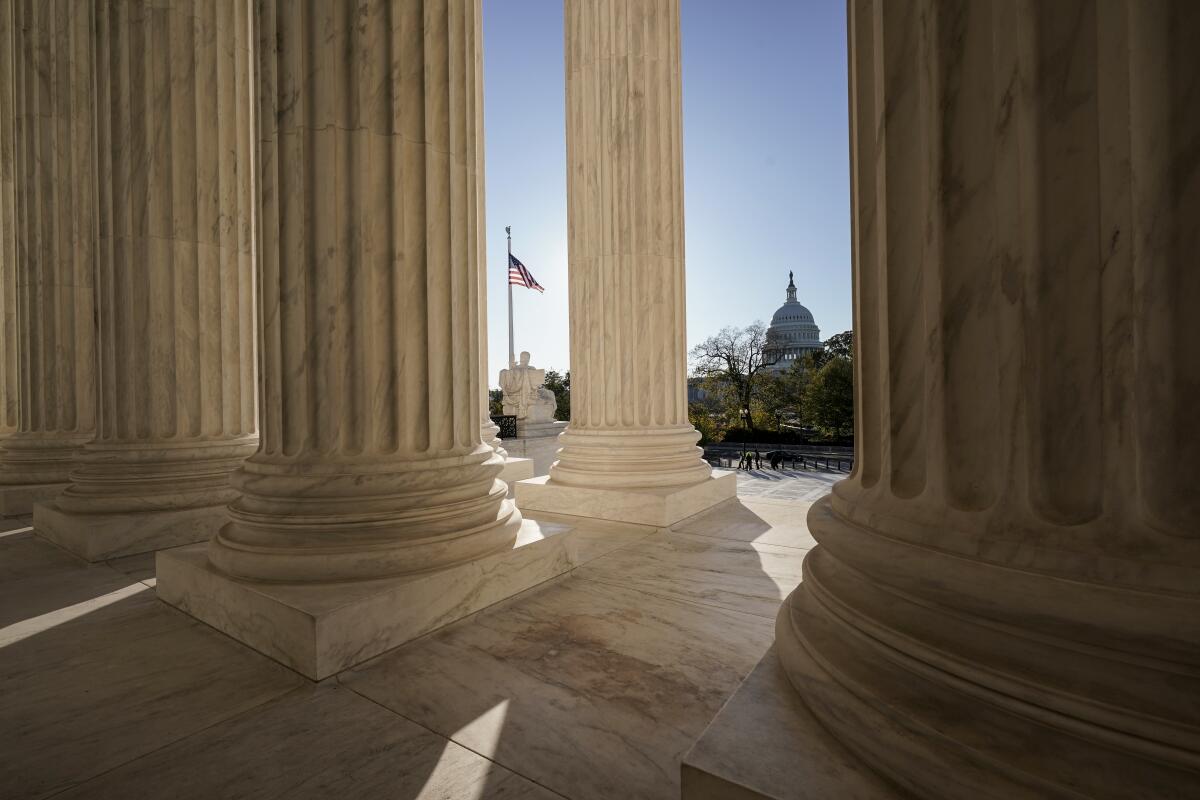How a cheerleader’s angry social media post landed before the Supreme Court

B.L. was angry.
It was the end of her freshman year in high school and she’d just been informed she had not made the varsity cheerleading squad for the second year in a row. She’d be junior varsity again as a sophomore.
She and a friend were out shopping. B.L. — the way she is referred to in court papers because she is a minor — grabbed her phone and, using Snapchat, a social media platform on which posts are ephemeral and self-deleting after 24 hours, she, uh, expressed herself the way high school students will.
“F— school. F—softball. F— cheer. F— everything,” she wrote, spelling out the offending words. In an accompanying photo, she and her friend stuck out their tongues and raised their middle fingers.
The post wouldn’t have caused much disruption or outcry — that’s the way high school kids talk, right? — except that one classmate took a screenshot of it and showed it to her mother, who was a coach on the cheerleading team. Next thing B.L. knew, she was suspended from the JV team for the entire following year.
From those rather mundane details of ordinary public high school life came a years-long freedom of speech case with national ramifications that has worked its way up through the trial and appellate courts and was accepted for consideration last month by the U.S. Supreme Court, which will hear oral arguments in the spring.
The big issue: Did the school have the right to punish B.L. for what she posted?
Of course we did, say school officials at the Mahanoy Area School District in Pennsylvania, who have chosen to pursue this case as far as it can possibly go despite losing at each step along the way. She was punished, the district insists, for violating preexisting school rules demanding “respect for school, coaches, teachers [and] other cheerleaders” and prohibiting “foul language” and tarnishing the image of the school. They denied that her words were innocuous and said the comments could affect “team morale.”
Furthermore — and this gets to the heart of the case — the school says it had the authority to punish her even though the offending speech was expressed off-campus. After all, in the era of social media, old-fashioned notions of “on campus” and “off campus” are blurred; because a text or tweet or, in this case, a snap sent from the local Cocoa Hut, can travel so far, so fast that it can easily “permeate the school environment.”
Oh, come off it.
Who wants to live in a society in which school administrators have the authority to punish students for harmless (if profane) comments that are not disrupting school activities or even made on school campuses? Do we really want schools to extend their authority into students’ homes and their out-of-school lives so that teachers and principals — rather than parents — can decide if what students are saying is acceptable or not?
I mean, sure, if a student curses out a teacher in a classroom, that’s one thing. That’s not free speech, that’s disruption.
But B.L. posted her angry-but-ultimately-harmless outburst from her own cellphone from a store on a Saturday. No one was threatened — or even named. She was clearly letting off steam, and it’s hard to see why that should be the business of the school. Her comments went only to specific recipients (albeit 250 of them).
In my view, the school was entirely out of line to punish her, which is what her ACLU lawyers have argued.
Now to be clear, there are situations where schools might legitimately need to punish off-campus behavior. As the school district has noted, online speech expressed from off campus can in some circumstances be “a force multiplier for ... the worst student impulses.” That could include, for instance, spreading racist, sexually harassing or other kinds of hurtful or bullying messages.
Schools ought to be able — and in some cases are required by law — to punish off-campus speech that could be truly harmful; they need to be able to act in cases of cyberbullying and harassment, for instance. The alternative could be a toxic, unsafe or hostile school environment.
But if schools are going to monitor outside speech, they’d better have pretty clear guidelines about what they may and may not punish under the 1st Amendment. And that should not include speech that doesn’t cause serious interference in the operation of the school or potential harm to others.
When it decides B.L.’s case, the Supreme Court should set a standard that protects kids but doesn’t allow schools to go after the stupid stuff — such as students griping outside of school about not making a team.
A battle over a spot on the cheerleading squad may not seem at first glance to be the kind of speech John Stuart Mill, Voltaire, Oliver Wendell Holmes and other great defenders of freedom of expression had in mind during their impassioned debates over the centuries.
But in fact there’s a long line of cases involving the 1st Amendment rights of students — whether they may use profanity, dress as they please, glorify drug use, publish freely in school newspapers, express political opinions. Probably the most important Supreme Court precedent on the subject is Tinker vs. Des Moines, a 1969 decision upholding the right of students to wear black armbands to school to protest the war in Vietnam.
In that case, the court held that students don’t “shed their constitutional rights to freedom of speech or expression at the schoolyard gate.” Speech, the court concluded, may not be restricted in public schools unless it causes substantial disruption.
Now, it seems, the court needs to protect the rights of students on the other side of the gate as well.
@Nick_Goldberg
More to Read
A cure for the common opinion
Get thought-provoking perspectives with our weekly newsletter.
You may occasionally receive promotional content from the Los Angeles Times.











